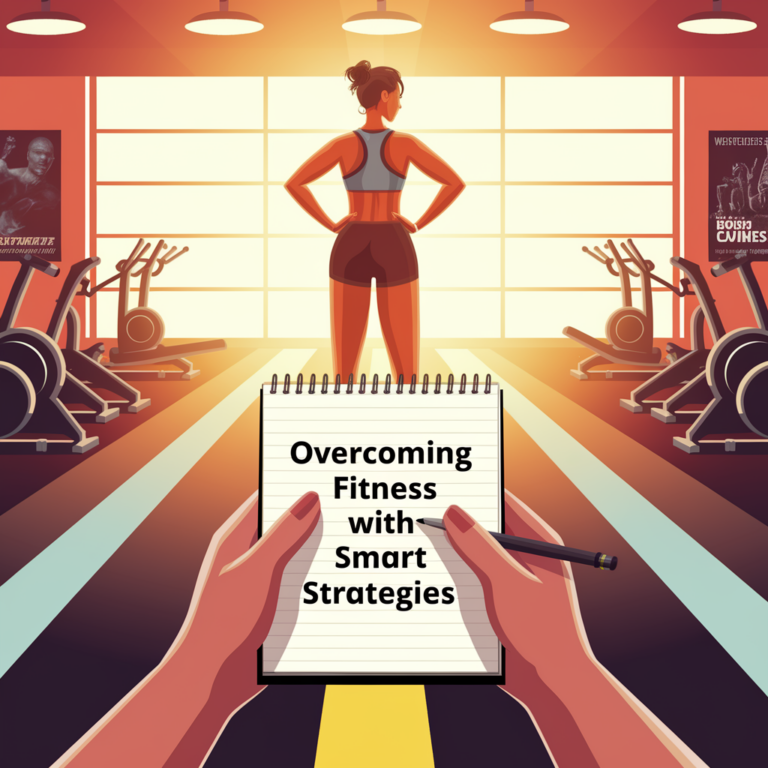The Cultural Significance of Traditional Sports Around the World
When we think of sports, we often picture global superstars, massive stadiums, and the roar of enthusiastic crowds. But there’s a quieter, more intimate side to the world of athletics—traditional sports that have roots in local cultures, histories, and communities. These activities are more than just games; they are living legacies that weave together the fabric of identity and heritage across generations.
As I dive into the world of traditional sports, I can’t help but recall my own childhood, where simple games on the playground seemed to carry the weight of tradition, even if they were just a form of escapism from the daily grind. Each sport tells a story, and these stories shape our understanding of culture, community, and connection. So, let’s embark on a journey around the globe and explore the cultural significance of traditional sports.
Understanding Traditional Sports
First, what exactly constitutes a traditional sport? Generally, these are sports that have been played for generations and are often tied to the customs and practices of a particular community. They may not always be recognized at an international level, but they hold immense value to the people who play them. Some of these sports have roots that stretch back centuries, while others may have emerged more recently, still closely linked to local traditions.
To illustrate, let’s look at the following characteristics that define traditional sports:
- Cultural Roots: These sports often reflect the values, history, and social practices of a community.
- Community Involvement: Many traditional sports are played and celebrated by local communities, fostering a sense of belonging.
- Unique Rules and Equipment: Unlike mainstream sports, traditional sports may involve unique rules, playing styles, and even custom equipment that can tell you a lot about the culture they come from.
- Rituals and Celebrations: These sports often come with traditional rituals, festivals, or ceremonies that enhance their cultural significance.
Now that we’ve got a framework, let’s explore specific examples that highlight the richness of traditional sports across various cultures.
Sumo Wrestling: Japan’s Cultural Colossus
In Japan, sumo wrestling is not just a sport; it’s a centuries-old tradition steeped in rituals and symbolism. As I watched a sumo match during my visit to Tokyo, I was struck by the pageantry: the wrestlers, or rikishi, donned elaborate mawashi (belts), and the ring was surrounded by a ceremonial shinto shrine. It was as if each match was a performance, telling a story of strength, honor, and respect.
Sumo has roots that go back over a thousand years, originally emerging as a religious ceremony to ensure a good harvest. Today, it carries deep cultural significance, representing the values of discipline, humility, and perseverance. The rikishi are not just athletes; they are also cultural ambassadors, often trained from a young age in the traditions of sumo.
The sport continues to thrive, attracting fans from all walks of life, both local and international. Tournaments held in arenas like the Ryogoku Kokugikan are packed, with spectators cheering passionately as they witness the clash of titans in the ring. The experience is electric, and it struck me that while the sport has evolved, its essence remains deeply rooted in Japanese culture.
Kabaddi: India’s Indigenous Game
Traveling to India, one can’t miss the excitement of kabaddi, a game that is as much about strategy as it is about physical prowess. Each match is a thrilling display of agility and endurance, where players—known as raiders and defenders—engage in a high-stakes game of tag, all while holding their breath and chanting “kabaddi, kabaddi.”
I remember the first time I saw kabaddi being played in a dusty village ground; the atmosphere was infectious. Children and adults alike gathered around, their cheers echoing as they watched the raider dash into the opposing team’s half, trying to touch as many players as possible before returning home. The game, which has roots in ancient India, emphasizes teamwork, bravery, and quick thinking.
With its growing popularity, kabaddi has recently gained international attention, but its heart remains in the villages of India, where it is a symbol of local pride and resilience. The Pro Kabaddi League has further popularized the sport, but I often wonder if it can maintain its grassroots essence amidst commercialization. Can a balance be struck between tradition and modernity?
Hurling: Ireland’s Ancient Game
In the lush fields of Ireland, hurling stands out as one of the oldest field sports in the world, with roots tracing back over 3,000 years. The game is played with a curved wooden stick called a hurley and a small ball known as a sliotar. Watching a match can be an exhilarating experience; the speed, skill, and athleticism on display are nothing short of breathtaking.
What struck me most during my visit to a local hurling match in County Clare was the sense of community surrounding the sport. Families gathered to cheer on their local teams, wearing colors with pride. The game isn’t just a pastime; it’s an integral part of Irish identity, often celebrated during festivals and special occasions. The passionate rivalry between clubs adds a layer of intensity that is palpable in the air.
Hurling’s historical significance is also noteworthy. It has been associated with Irish folklore and mythology, and many myths and legends revolve around the sport. The GAA (Gaelic Athletic Association) plays a crucial role in preserving hurling, ensuring that this tradition continues to thrive. The dedication to maintaining the sport’s authenticity while promoting it to a broader audience is commendable.
Capoeira: Brazil’s Dance of War
Capoeira is another fascinating example of a traditional sport that blends physicality with artistic expression. Originating among enslaved Africans in Brazil, capoeira was created as a means of self-defense, disguised as a dance to avoid detection by slave masters. The fluid movements and rhythmic music create an atmosphere that feels almost magical.
Experiencing a capoeira circle for the first time was a revelation. The way participants moved, kicked, and flipped, all while singing and clapping, made me realize that this sport is a cultural celebration as much as it is a form of martial arts. Capoeira embodies the fight for freedom, resilience, and creativity, and it has evolved into a global phenomenon.
What I find particularly fascinating about capoeira is its community aspect. It’s not just about individual prowess; it’s about connection. The roda (circle) where capoeira is practiced fosters camaraderie and mutual respect, transcending cultural and geographical barriers. It’s a beautiful reminder that traditional sports can unite people in the most unexpected ways.
Folk Wrestling: A Global Tapestry
Wrestling, in its many forms, is a universal sport that has taken on distinctive cultural characteristics across different regions. From the Mongolian struggle known as “Bökh” to the Scottish “Caber Toss,” wrestling connects communities through shared rituals and competitions. Each style tells a story of strength, skill, and local customs.
During a trip to Mongolia, I had the chance to witness the Naadam Festival, where traditional wrestling takes center stage. As I watched the competitors—dressed in colorful attire—grapple with one another, I was struck by the sense of pride that surrounded the event. Wrestling in Mongolia is not just a sport; it’s a rite of passage, a display of physical and mental fortitude that has been passed down through generations.
In contrast, my experience at a Scottish Highland Games was filled with a different kind of energy. The caber toss, where competitors flip a tall log end over end, was both hilarious and awe-inspiring. I couldn’t help but chuckle at the sight of burly men attempting to balance the caber, their faces a mix of determination and sheer disbelief. The camaraderie among participants and spectators alike highlighted how folk wrestling transcends competition—it’s a shared celebration of culture and community.
Traditional Sports and Their Impact on Community Identity
The cultural significance of traditional sports goes beyond the games themselves; they serve as vehicles for community identity and cohesion. In many cases, these sports are intertwined with local customs, folklore, and even religious practices. They create spaces for people to come together, celebrate their heritage, and pass down traditions to future generations.
Consider the impact of traditional sports on social cohesion. For many communities, participating in these activities fosters a sense of belonging and pride. It provides an opportunity for individuals to connect with their roots and each other. In times of social upheaval, traditional sports can even serve as a source of resilience, helping communities unite in the face of adversity.
Some studies suggest that traditional sports can also have a positive effect on mental and physical health, promoting active lifestyles while providing a sense of purpose. The joy of participation, whether as a player or a spectator, can create lasting memories and forge connections that transcend time and place.
The Challenges of Preservation
Despite their cultural significance, traditional sports are facing numerous challenges in the modern world. Globalization, urbanization, and changing lifestyles threaten to overshadow these age-old practices. Many traditional sports struggle to attract younger generations, who may be drawn to more commercialized, mainstream sports or digital entertainment.
During my travels, I’ve often encountered passionate advocates working tirelessly to preserve their traditional sports. They hold workshops, organize local competitions, and engage in community outreach to keep the spirit of these activities alive. However, the path to preservation is fraught with challenges. Funding, resources, and interest can be hard to come by.
Another issue is the commercialization of traditional sports. While increased visibility can bring much-needed support, it can also lead to the dilution of cultural practices. Striking a balance between maintaining authenticity and embracing modernization is a delicate dance. I often wonder how we can ensure that the essence of these sports is not lost in translation as they adapt to the modern world.
Conclusion: A Legacy Worth Celebrating
As we’ve journeyed through various traditional sports, it’s clear that each one carries a unique narrative, rich in history and cultural significance. These sports are more than mere games; they are expressions of identity, resilience, and community. They remind us of our shared humanity and the importance of preserving our heritage.
In a world that often seems to prioritize the new and flashy, traditional sports stand as a testament to the enduring power of culture. They offer a glimpse into our past while inviting us to celebrate the present. As I reflect on my own experiences with traditional sports, I find myself hopeful for their future. With dedicated individuals determined to keep these traditions alive, we might just find that the games of our ancestors can continue to inspire generations to come.
So, the next time you hear about a traditional sport, take a moment to delve deeper into its story. You might find that it’s not just a game—it’s a window into the heart of a community, a celebration of culture, and a legacy worth cherishing.







